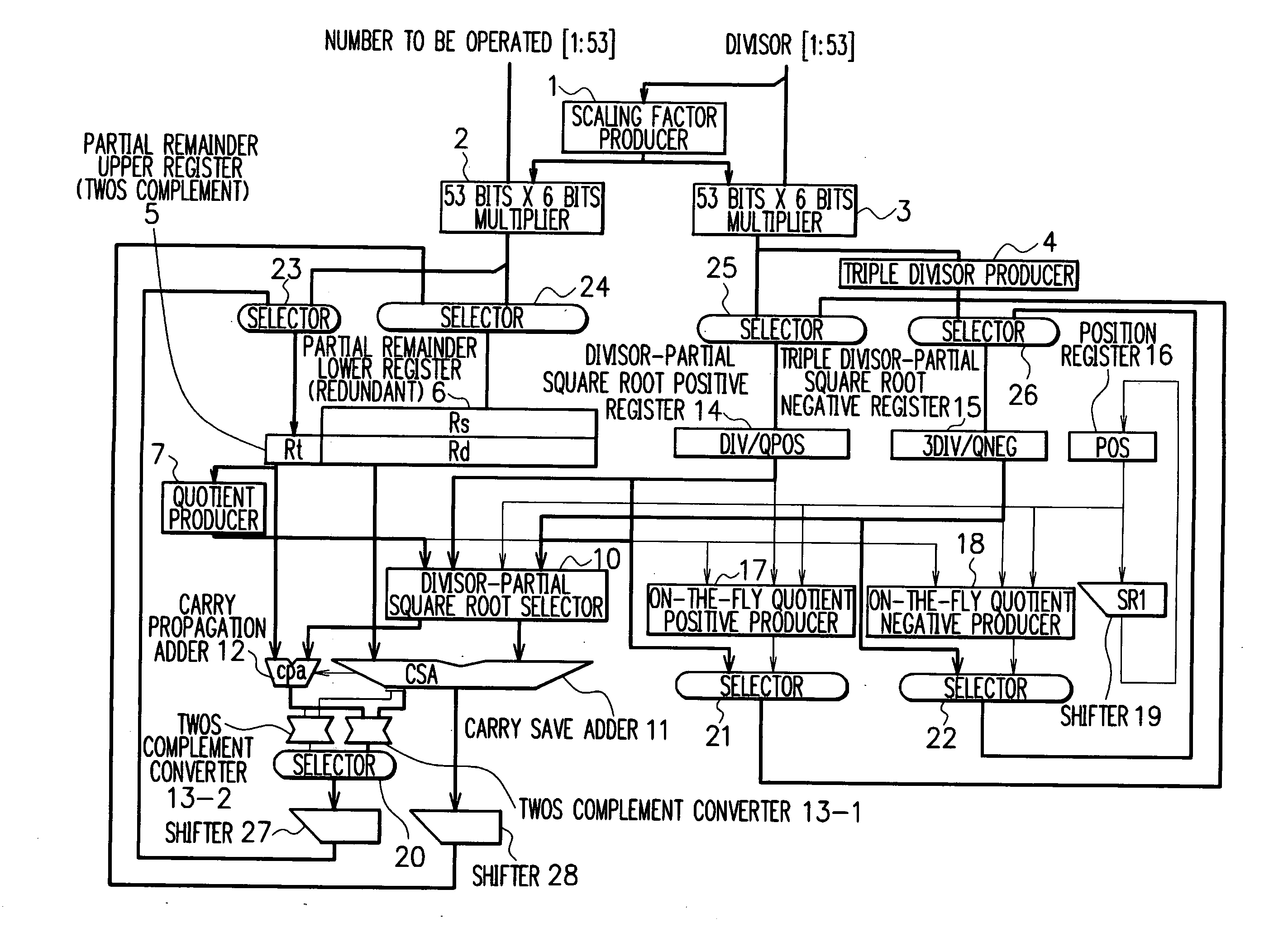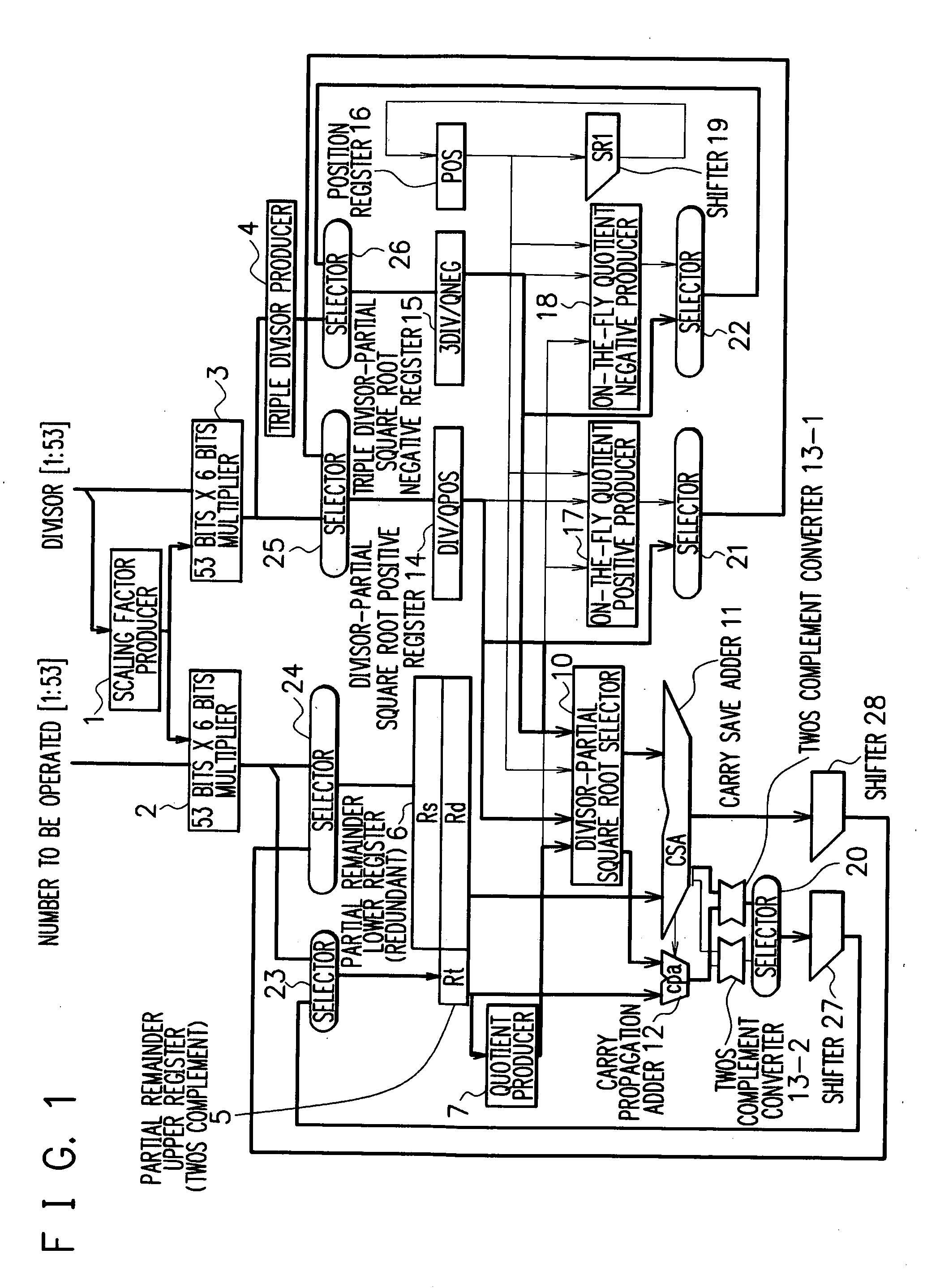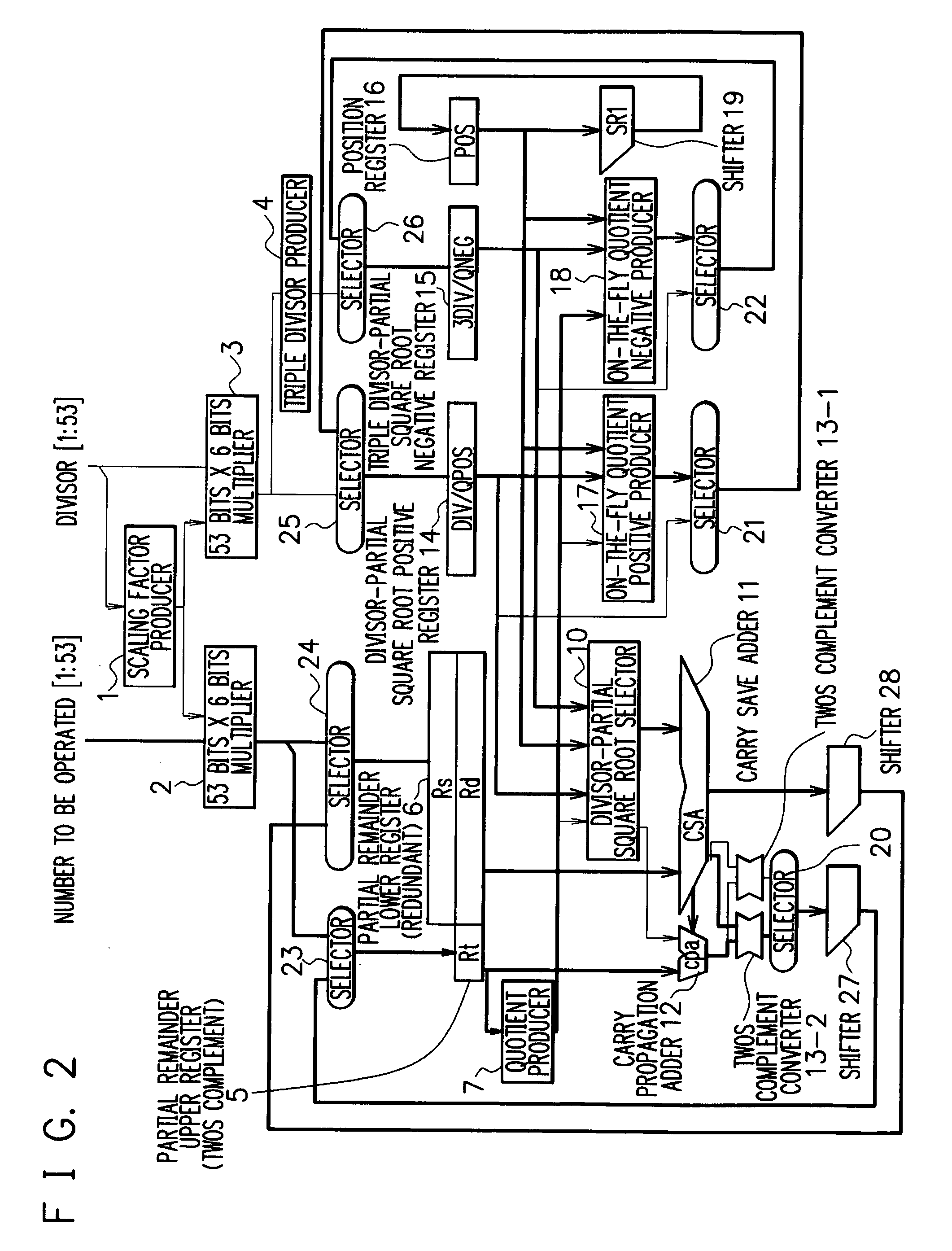Division and square root arithmetic unit
a division and square root technology, applied in the field of division and square root arithmetic units, can solve the problems of deteriorating processing performance, complex circuitry, and complicated above-operation operations, and achieve the effects of effective and high-performance arithmetic units, circuit delay the time of the path for returning the result, and improved division processing performan
- Summary
- Abstract
- Description
- Claims
- Application Information
AI Technical Summary
Benefits of technology
Problems solved by technology
Method used
Image
Examples
first embodiment
[0039] In FIG. 1, there is shown a division and square root arithmetic unit according to the present invention.
[0040] In FIG. 1, a scaling factor producer 1 produces a multiplication factor to be used for scaling. The scaling factor producer 1 produces from the divisor a multiplication factor for scaling a divisor within a range such as 5 / 3≦divisor2 and 3 multiply an input dividend of 53 bits and an input divisor of 53 bits by the multiplication factor fed from the scaling factor producer 1, respectively, to output the multiplication results. This implements normalization of upper 4 bits of a partial remainder and refers to the upper 4 bits to determine a quotient of 2 bits (a divider of radix 4).
[0041] In a division operation of radix 4, the divisor is scaled within the range such as 5 / 3≦divisor<1.75 to produce the quotient of 2 bits from the upper 4 bits of the partial remainder. When the method for producing the quotient only from the upper 4 bits of the partial remainder is ado...
second embodiment
[0085] In FIG. 3, there is shown a division and square root arithmetic unit according to the present invention.
[0086] In the first embodiment described above, to produce the partial remainder at the next step, the 2 bits data conversion into the twos complement representation in the division operation or the 1 bit data conversion into the twos complement representation in the square root extraction operation is carried out, and in addition, the selector 20 for selecting the division operation or the square root extraction operation is used. The path for returning the result obtained by subtracting the divisor from the partial remainder to the partial remainder upper register 5 includes a large number of logic stages. An addition of the selector in this path increases circuit delay time, and hence delaying a clock or a register addition becomes required, resulting in lowering a processing speed of the division operation and the square root extraction operation.
[0087] In the second e...
PUM
 Login to View More
Login to View More Abstract
Description
Claims
Application Information
 Login to View More
Login to View More - R&D
- Intellectual Property
- Life Sciences
- Materials
- Tech Scout
- Unparalleled Data Quality
- Higher Quality Content
- 60% Fewer Hallucinations
Browse by: Latest US Patents, China's latest patents, Technical Efficacy Thesaurus, Application Domain, Technology Topic, Popular Technical Reports.
© 2025 PatSnap. All rights reserved.Legal|Privacy policy|Modern Slavery Act Transparency Statement|Sitemap|About US| Contact US: help@patsnap.com



